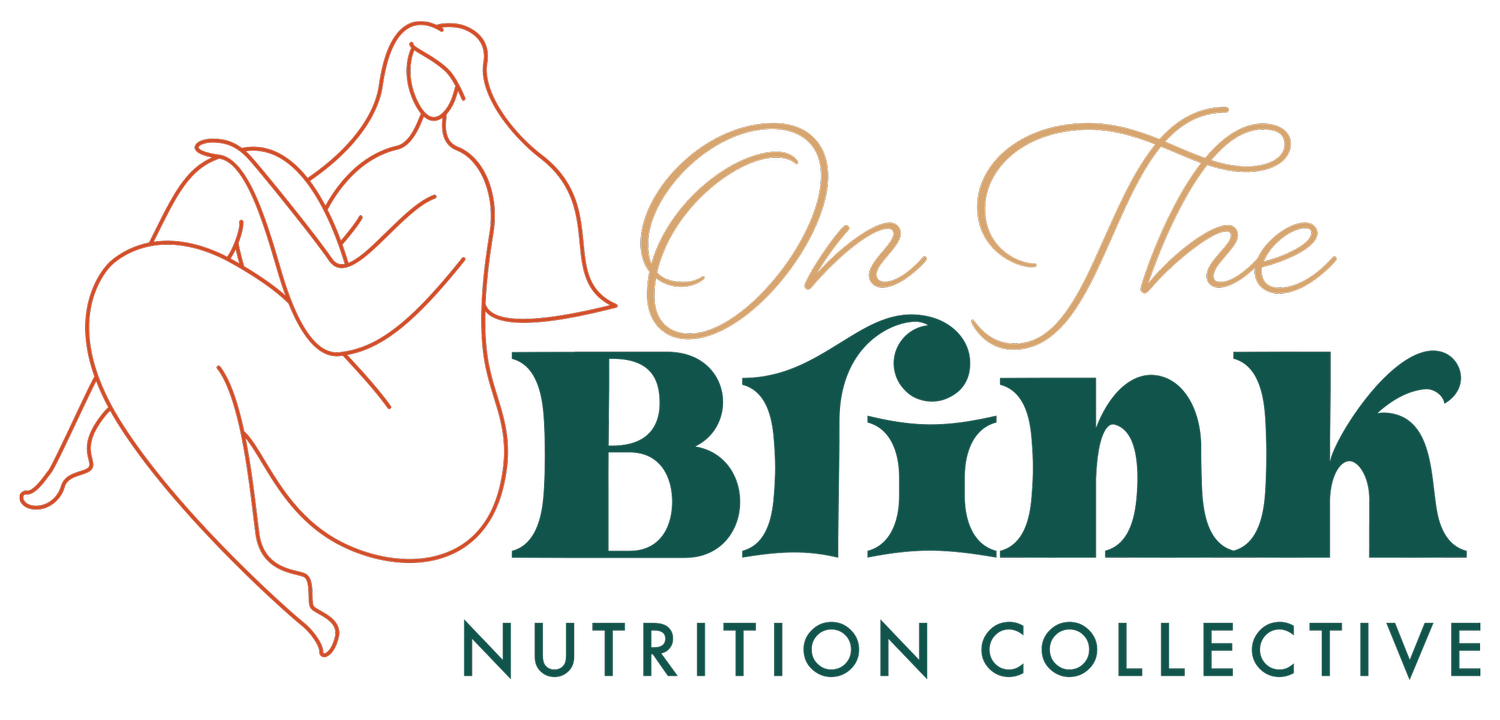I Have A Body -> I Am A Body
Our bodies are pre-programmed to heal. We get in the way of the healing by falling out of relationship with our body.
It’s almost inevitable. We live in a culture that tells us we can only feel good about a body that is getting smaller. And, while we see companies making strides in representing diverse bodies, the dominant message continues to uphold a thin ideal that says: “Here’s a body that can help you be good and grant you power and membership to the group.”
A path towards healing the relationship with body and food is by building safe embodiment.
What is embodiment?
Embodiment involves “being-with and working-with all the sensations, emotions, and experiences life offers.” It’s a state where the mind and body are partners, working as one. In my work, I see a lot of disrupted embodiment - the body becomes the enemy of the mind, or forgotten by the mind completely (rejected and subdued).
You may have heard of the word mindfulness. Practicing mindfulness broadens conscious awareness. It uses a part of the brain that allows us to experience something without judgement. We may be able to notice our judgement, but separate the experience from the need to label it bad or good. Mindfulness invites us to describe (with wonder and curiosity) that which we are made aware.
Safe embodiment includes mindfulness, but takes the experience a bit further. The practice of embodiment expands our seat of awareness, recognizing thoughts and then taking us down into our body where feelings and sensations reside.
Why embodiment?
Practicing and acting from a place of safe embodiment helps us:
respond to situations from a wise and grounded place; this means less impulsive reactions and more thoughtful and skillful responses.
honor the usefulness of noticing, understanding, and interpreting body signals. I hesitate to say “trust” our signals, because sometimes our signals call us to behave in harmful and even violent behaviors (towards ourselves and others). The practice of safe embodiment wakes us up to body signals that have been braided into our threat response system or our social engagement system from culture.
Through safe embodiment practice provides a sense of choice and congruence (an inner harmony that includes all parts), leading us to a more holistic approach on the path towards true wellbeing.
What keeps us in a battle against our body and her sensations?
Injury and Illness (pain and loss of ability may cause us to want to leave our body)
A broken limb, a chronic illness
Threat to life or livelihood (or perceived threat)
Gaslighting, acts of violence (rape, abuse, neglect)
Lack of access to food, healthcare, housing, education, nature, supportive infrastructure.
Rejection (or perceived rejection) from an attachment figure (a parent/primary caregiver, peer group, community, culture).
By using shaming language about body size, food choice, sexual preference, etc..
Sensory processing disorders
Unable to use information received through the senses.
As I make out this list of the disruptors to safe embodiment (and I’m sure my privilege has caused me to miss more than I know I’m missing), I must pause to take in (embody) the enormity of the forces at work that keep us from accessing our body as a resource, a safe home. I step away from this writing, taking myself to the next room where my children sit playing. I watch as they build with Legos. I feel the despair and hopelessness subsides a bit, watching them work together to build a house. This tells me something: we need each other.
We can’t do this work alone.
A Practice for Safe Embodiment
Befriending the Brilliance of our Body
One way to experience food from the body’s points of view. (aka Icebreaker Game to reacquaint food with the body).
Before you begin, I want you to consider: When working with food in a “practice”, take note of how your experience is impacted in a well-fed vs. hungry state. It may be essential to have a safe other (caring guide) to help you find your way safely through this practice. Check in with yourself. Do you feel opened or closed? If you are open, continue to step 1. If you feel closed, this may not be the time to proceed.
Choose a food item or ingredient.
Find a comfortable place to sit.
Notice the parts of your body that make contact with the chair and floor.
Using the sense of sight, look at the item from all angles.
Notice the eye that is seeing. Can you feel the eye that is seeing?
Using the sense of touch, feel the item you are looking at.
Notice the fingers that are touching. Can you feel the finger that is touching?
How does touching the object change what you know?
Does the experience of the item after touching it land in your body differently than the idea of it that you formed by looking at it?
Continue to experience the item with the sense of smell, hearing, and (if it feels safe) taste.
After completing this practice, how might you complete this phrase:
I didn’t know that I didn’t know…
Remember, tuning into the sensations of planning, preparing, and eating is the only way to have a sensational relationship with food.
